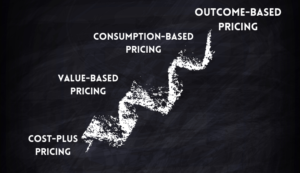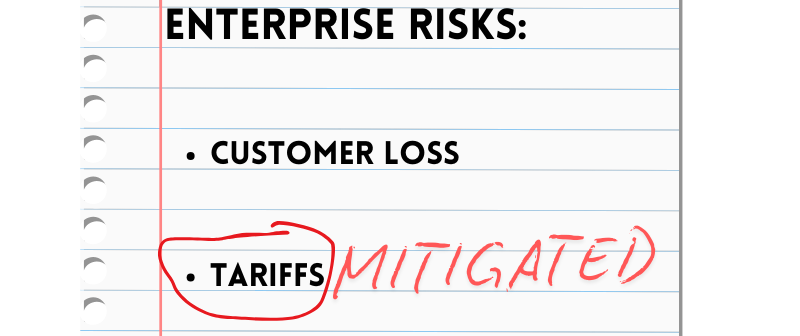As many companies approach their budgeting season, the question often arises: how much should you allocate for new initiatives like pricing optimization or Artificial Intelligence (AI) projects? It’s tempting to postpone these efforts with the hope that resources will become available later in the year, but waiting for “leftover” funding is rarely a sound strategy. In fact, if resources suddenly become available mid-year, it often signals an emergency situation, which is far from ideal.
Why Prioritize Pricing Initiatives Early in the Fiscal Year.
The good news is that pricing initiatives offer a clear and measurable return on investment (ROI). Unlike some projects, the financial impact of pricing strategies can often be seen quickly, sometimes within months. This means that a well-executed pricing initiative, launched early in the fiscal year, has the potential to be cost-neutral—or even accretive—by year-end.
AI projects, on the other hand, can be a bit more complex. While AI offers transformative potential, companies often get caught up in the hype, forgetting to define clear business use cases. Without a focused approach, AI initiatives can drag on, leading to bloated timelines and less impressive results than initially promised. It’s crucial to stay grounded and ensure AI projects align with specific business objectives rather than chasing technology for technology’s sake.
Key Considerations for Planning Your Next Pricing or AI Initiative.
Based on my experience with numerous organizations, here are the essential factors to consider when budgeting for your next pricing or AI project:
1. Funding
Engaging with top consulting firms can sometimes result in million-dollar proposals. While high stakes might be justifiable for large-scale transformations, they also heighten the pressure to deliver substantial ROI. Carefully vet your budget to ensure it is aligned with achievable returns. Ask yourself: Is the investment proportionate to the value it will create? And how long will it take to reap those benefits and make it accretive?
2. Scope
If the price tag of your initiative is in the millions instead of hundreds of thousands, you might be aiming too high out of the gate. Start with a smaller, manageable scope that allows for quick wins and immediate monetization of improvements. This is particularly critical in pricing projects, where you can begin to see benefits early and use those successes to justify further investment. Even if you’re overhauling an entire company’s pricing, start with one or two key areas, prove value, and then scale.
3. Focus
Many organizations suffer from initiative overload, juggling too many high-priority projects at once. If this describes your situation, adding an AI or pricing project to the mix will likely result in delays or underperformance. Before launching, ensure your organization can properly allocate resources and that the team is fully dedicated to seeing the initiative through. Since these projects are highly cross-functional, conflicting priorities will likely jeopardize the initial business case.
4. Data Governance
You can’t build a roof without a solid foundation, and the same goes for pricing and AI initiatives. Ensure your company has a minimum level of data governance in place. This means clean, organized, and accessible data that can feed into pricing models or AI algorithms. Without it, your efforts will be undermined by inaccurate insights, leading to poor outcomes. If your data infrastructure isn’t ready, consider building this foundation first, even if it means delaying more advanced projects.
5. Internal Alignment
The biggest threat to AI and pricing projects is that they remain a proof of concept—great ideas that never get fully integrated into the business. For these initiatives to succeed, you need change management practices to ensure organization-wide adoption. Teams might initially resist pricing changes or AI-driven insights, fearing disruption to their usual processes. It’s crucial to position these projects as essential for growth and efficiency, while providing adequate support, training and incentives to help teams embrace them.
6. Ownership
The success of your pricing or AI project hinges on clear ownership. At a minimum, ensure you have three elements in place:
a) Executive-level support to champion the initiative.
b) A dedicated Executive sponsor who will oversee the project’s strategic alignment.
c) A Project Manager, even if part-time, who will be responsible for driving day-to-day progress and overcoming hurdles.
By assigning accountability at multiple levels, you create the conditions for fast problem-solving and more effective project implementation.
7. “To Be Processes” vs. A Shiny New System
The allure of shiny new systems can backfire, particularly when underlying processes are not already geared towards a new system. Rather than investing in a new system and hope that technology will solve the existing business problems, companies are much better off by improving existing processes and THEN invest in new technology to automate and streamline steps. I have seen many organizations trying to “lift & shift” archaic and bloated old processes, customizing powerful software to accomplish pricing steps which should not be occurring going forward.
Conclusion
Pricing and AI initiatives can deliver significant value, but only if they are properly scoped, funded, and aligned with your company’s strategic goals. By planning early, defining a clear scope, and ensuring internal alignment, you greatly improve the chances of success. If you need help navigating this process, don’t hesitate to reach out—we’re here to guide you through it.









